
We all know people created dogs. What Tesla's Love wants to know is: what role did dogs play in the evolution of humans? That's for another story.
Meanwhile, according to a statement from a place we all know and love, the domestication of dogs "played a strong role in shaping Charles Darwin’s theory of evolution."
And now and canine domestication is featured prominently in Darwin: 150 Years of Evolutionary Thinking on view at the Yale Peabody Museum of Natural History, 170 Whitney Ave., New Haven, Conn., through Labor Day.
A statement by the museum says, "Darwin believed that our knowledge of “variation under domestication” offered strong clues to test his ideas about evolution. Since it was commonly known that the dog was descended from wild ancestors, Darwin connected what was known about how traits emerged and were passed on with what breeders did to refine the characteristics that produced such an astonishing range of breeds."
Further, "As Darwin noted, breeders “can largely influence the character of a breed by selecting, in each successive generation, individual differences so slight as to be inappreciable except by an educated eye. This unconscious process of selection has been the great agency in the formation of the most distinct and useful breeds."
According to the statement, Among dogs whose skeletons are featured in the exhibition is the Siberian husky “Togo,” a famous sled dog who led a team more than 260 miles to bring much needed serum to the residents of Nome, Alaska, during the 1925 diphtheria outbreak. Others are the Saint Bernard “Pythagoras Junior o’ Berncrest;” “Lassie of Dothayn,” a champion Scottish deerhound; “Papillon,” a toy spaniel; and the dachshund “Racker von Luitspoldheim.”

The exhibit features two films produced for the exhibition: "Darwin’s Revolution Comes to America" and "Darwin’s Legacy Today." The latter demonstrates great strides in evolutionary research and how its occurrence is much more rapid than Darwin ever imagined, the m useum said. “Whereas Darwin believed evolution was a gradual process, we now know that it can occur very rapidly, in fact in lock step with the environment,” David Skelly, exhibition curator and professor of ecology in the Yale School of Forestry, said in the museum's statement.
P.S. There also are two live specimens of the cane toad are on view in the exhibition. Anyone who has ever watched Steve Irwin knows the havoc the little hoppers wreaked on Australia. Also featured is the specimen, Hesperornis regalis, largely "responsible for Darwin’s recognition of Othniel C. Marsh, Yale paleontologist, professor and nephew of Peabody Museum founder George Peabody, for unearthing “most important evidence” in support if evolution. The specimen, a late Cretaceous “toothed bird” discovered by Marsh in Kansas, was one of the “intermediate forms” Darwin sought to link extinct lineages with those that developed into modern species," the museum statement says.
The exhibition is on view10 a.m. to 5 p.m. Monday through Saturday, and Sundays from noon to 5 p.m. Admission is $5-7 with children under 3 free. The Museum is closed July 4 but open Labor Day.
NOTE: The first photo is two of the champion dogs whose skeletons are featured in the Darwin exhibition: Lassie of Dothayn and Racker von Luitspoldheim. The second is of the toothed bird discovered by O.C. Marsh that was one of the “intermediate forms” Darwin sought to link extinct lineages with those that developed into modern species. Photos by the Peabody's own Public Relations & Marketing Manager Melanie Brigockas.
And now and canine domestication is featured prominently in Darwin: 150 Years of Evolutionary Thinking on view at the Yale Peabody Museum of Natural History, 170 Whitney Ave., New Haven, Conn., through Labor Day.
A statement by the museum says, "Darwin believed that our knowledge of “variation under domestication” offered strong clues to test his ideas about evolution. Since it was commonly known that the dog was descended from wild ancestors, Darwin connected what was known about how traits emerged and were passed on with what breeders did to refine the characteristics that produced such an astonishing range of breeds."
Further, "As Darwin noted, breeders “can largely influence the character of a breed by selecting, in each successive generation, individual differences so slight as to be inappreciable except by an educated eye. This unconscious process of selection has been the great agency in the formation of the most distinct and useful breeds."
According to the statement, Among dogs whose skeletons are featured in the exhibition is the Siberian husky “Togo,” a famous sled dog who led a team more than 260 miles to bring much needed serum to the residents of Nome, Alaska, during the 1925 diphtheria outbreak. Others are the Saint Bernard “Pythagoras Junior o’ Berncrest;” “Lassie of Dothayn,” a champion Scottish deerhound; “Papillon,” a toy spaniel; and the dachshund “Racker von Luitspoldheim.”

The exhibit features two films produced for the exhibition: "Darwin’s Revolution Comes to America" and "Darwin’s Legacy Today." The latter demonstrates great strides in evolutionary research and how its occurrence is much more rapid than Darwin ever imagined, the m useum said. “Whereas Darwin believed evolution was a gradual process, we now know that it can occur very rapidly, in fact in lock step with the environment,” David Skelly, exhibition curator and professor of ecology in the Yale School of Forestry, said in the museum's statement.
P.S. There also are two live specimens of the cane toad are on view in the exhibition. Anyone who has ever watched Steve Irwin knows the havoc the little hoppers wreaked on Australia. Also featured is the specimen, Hesperornis regalis, largely "responsible for Darwin’s recognition of Othniel C. Marsh, Yale paleontologist, professor and nephew of Peabody Museum founder George Peabody, for unearthing “most important evidence” in support if evolution. The specimen, a late Cretaceous “toothed bird” discovered by Marsh in Kansas, was one of the “intermediate forms” Darwin sought to link extinct lineages with those that developed into modern species," the museum statement says.
The exhibition is on view10 a.m. to 5 p.m. Monday through Saturday, and Sundays from noon to 5 p.m. Admission is $5-7 with children under 3 free. The Museum is closed July 4 but open Labor Day.
NOTE: The first photo is two of the champion dogs whose skeletons are featured in the Darwin exhibition: Lassie of Dothayn and Racker von Luitspoldheim. The second is of the toothed bird discovered by O.C. Marsh that was one of the “intermediate forms” Darwin sought to link extinct lineages with those that developed into modern species. Photos by the Peabody's own Public Relations & Marketing Manager Melanie Brigockas.
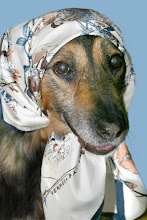



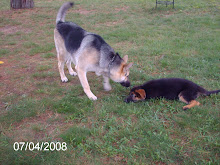
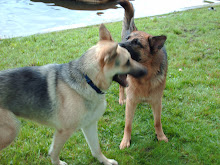
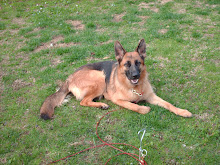
lr2.jpg)

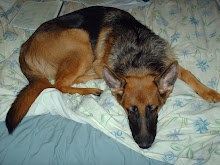
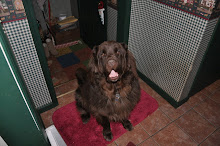
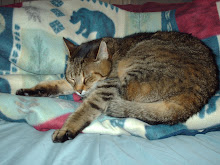
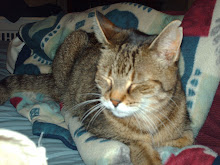
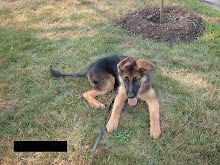








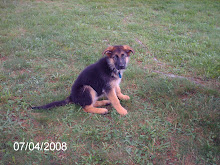
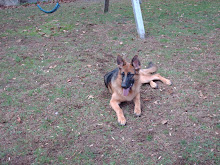





1 comment:
I enjoyed reading this, Helen! Thank you!
Post a Comment